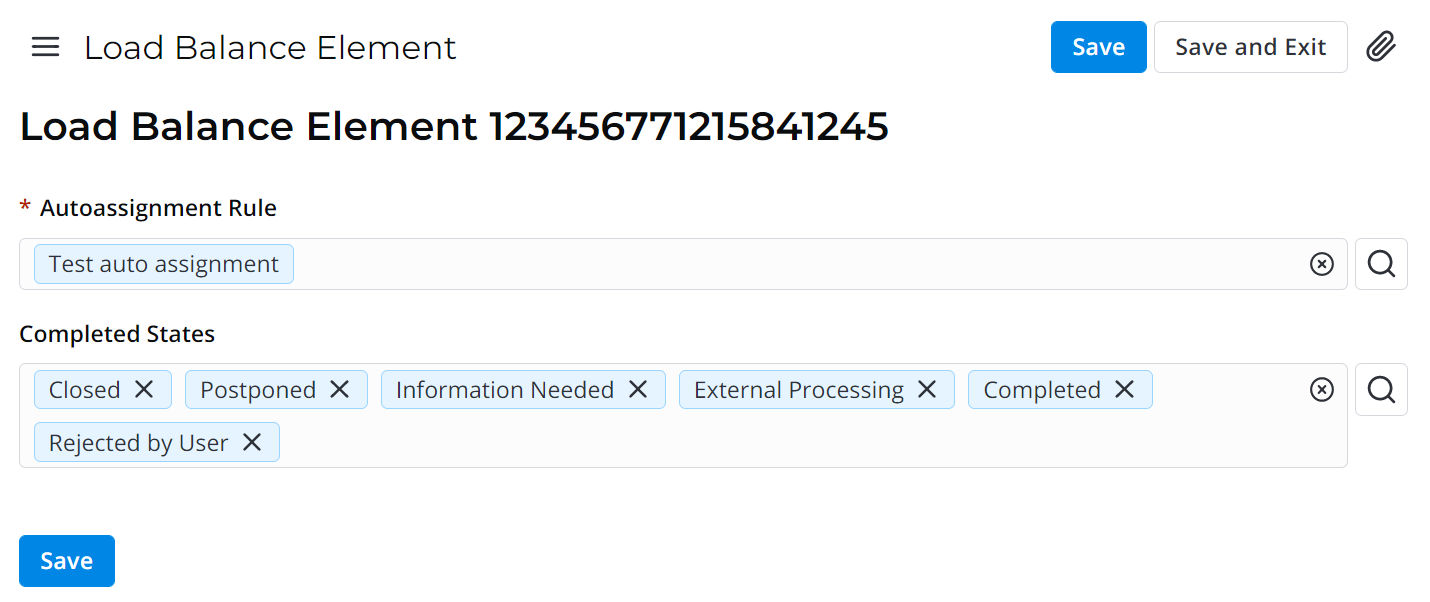You are viewing an old version of this page. View the current version.
Compare with Current View Page History
« Previous Version 23 Next »
Depending on your needs and business processes, you can assign tasks to agents manually or by using the task auto assignment engine. This engine allows automating tasks assignment by various criteria, defined by conditions, and implement business logic before a task is assigned. Tasks auto assignment allows balancing employee workload, creating different rules for different kinds of tasks.
There are three types of auto assignment:
Load Balancer – use this type to spread team load evenly. That is, if John Doe is already processing three tasks, he cannot take another one, so the current task will be automatically assigned to Barbara Wilson, who is processing two. So no employee within this team is overloaded with tasks.
- Round Robin – use this type to assign tasks to users one after another, disregarding their workload. That is, if this time John Doe got a task, then next time a task will be assigned to Barbara Wilson.
- Custom – use this type to create a custom auto assignment rule with the help of the Condition Builder and scripts. For example, a custom rule with specific conditions (such as keywords in subject or description, highest priority, urgency, services affected, etc.) can assign one particular user competent enough for such a task.
Please note that the configuration of the Load Balancer type requires two steps:
Creating an assignment rule
Role required: admin.
To create a new assignment rule, please complete the steps below:
- Navigate to Auto Assignment → New Rule.
- Click New and fill in the fields.
- Click Save or Save and Exit to apply changes.
Please keep in mind that task auto assignment triggers only for new records creation. That is, it is not possible to configure the auto assignment rule to handle record update event. For example: assigning tasks when state or any other field value changes is unsupported.
Load Balancer Elements
If you are creating a Load Balancer assignment type, you should define which tasks will not be taking into account while evaluating team's load. That is, you should exclude completed tasks works on which are finished. For this, complete the steps below:
- Open the auto assignment rule of the Load Balance type.
- Scroll down to the Related Lists area.
- Open the Load Balance Element tab.
- Click New and fill in the fields.
- Click Save or Save and Exit to apply changes.
Alternative way to create a load balance element is the following:
- Navigate to Auto Assignment → Load Balance Elements.
- Click New and fill in the fields.
- Click Save or Save and Exit to apply changes.
You can find an example with filled fields on the screenshot below.

Round Robin Elements
Round Robin Element stores information about the next group member to be assigned to a task. The count starts with "0" (group member 1). When the Current User Count field value is equal to "1", it mean that the next task will go to group member 2.
Unlike the load balance element, the system will create a relevant element automatically once the auto assignment rule executes. That us, the round robin element is not obligatory to create manually.
To create a round robin element, complete the steps below:
- Navigate to Auto Assignment → Round Robin Elements.
- Click New and fill in the fields.
- Click Save or Save and Exit to apply changes.
Absences and auto assignments
Auto assignment engine works in collaboration with personal schedule engine. If an agent is absent (on vacation, for example), they will not be assigned to a task. For this, the absence record should be created and approved for the person.
Personal Schedule is a separate application not included into a standard box. Make sure that you have the application installed. If it is not, please purchase the application pack from your vendor and install it as described here.
To create a new absence record, please complete the steps below:
- Navigate to Personal Schedule → All Absences.
- Click New and fill in the fields.
- Click Save or Save and Exit to apply changes.
- No labels